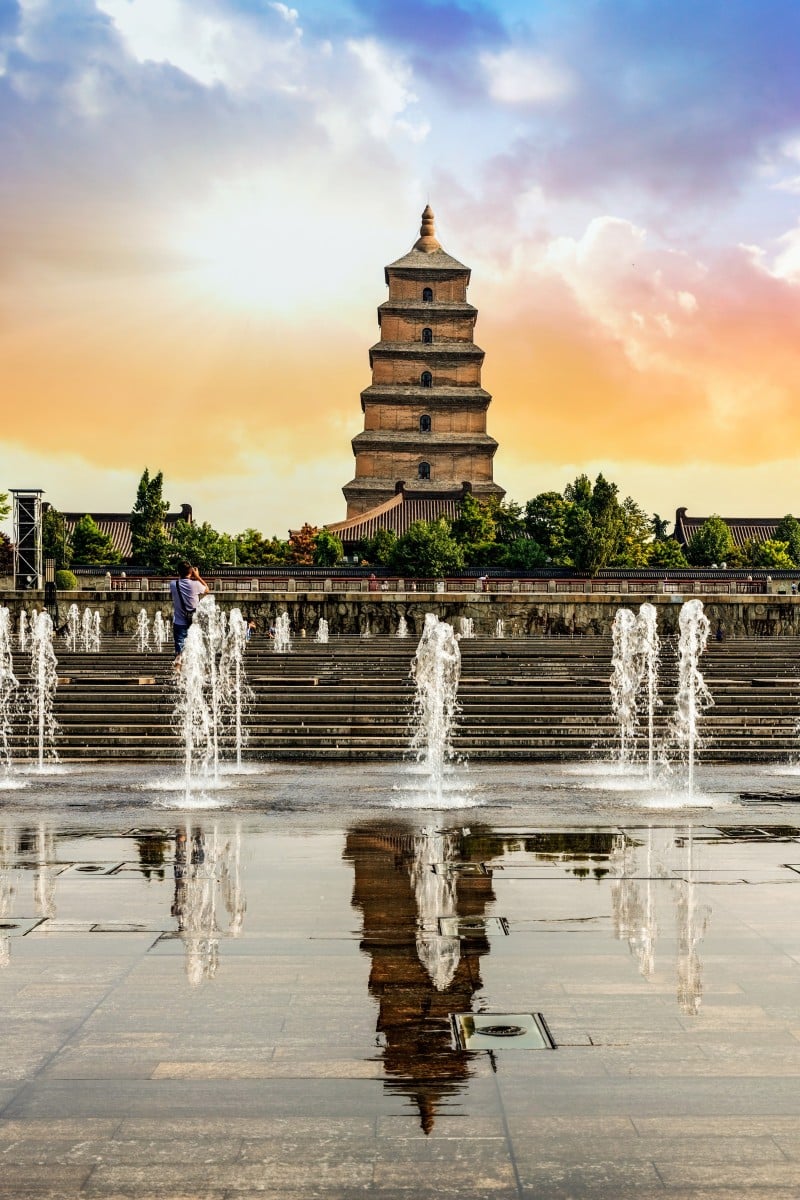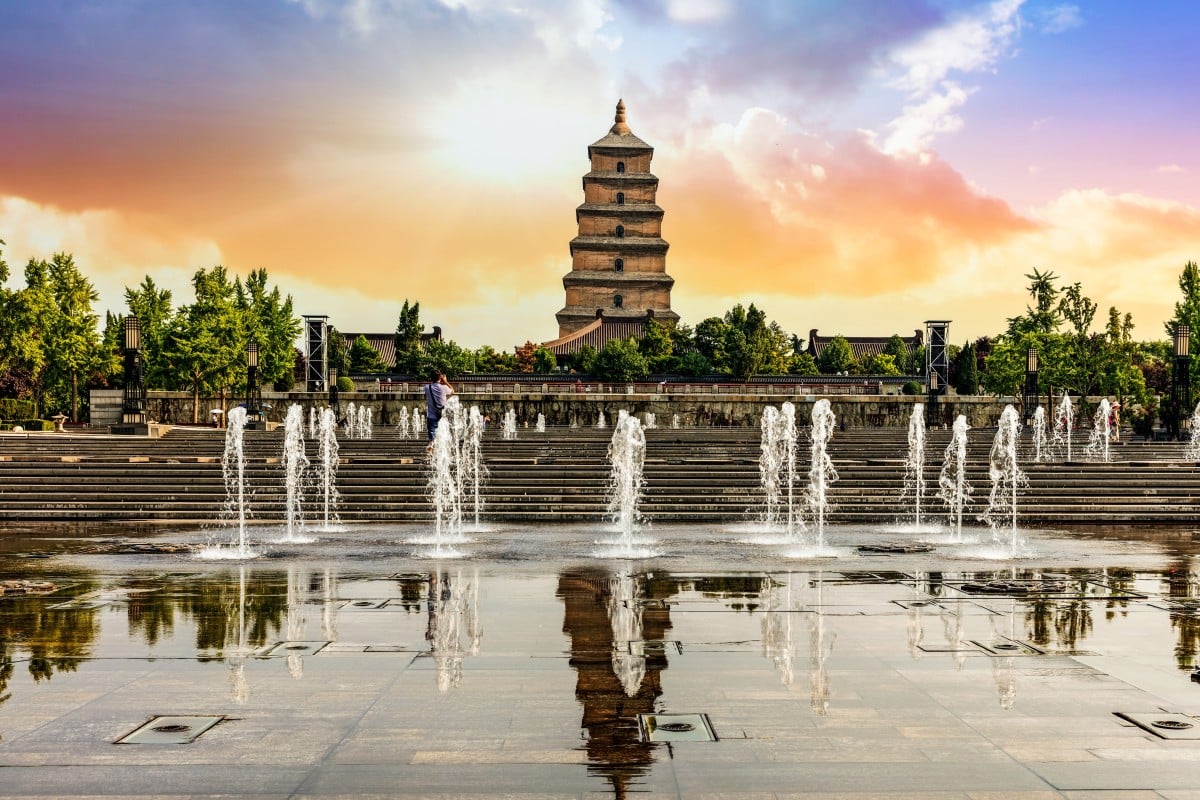
Check in China: Make the most of your visit to Xi'an, the city of history, culture, and food
Whether you are a thrill-seeker after an epic trek, or an IGer looking for the perfect shot, Xi’an is where you want to be
 The Giant Wild Goose Pagoda is Xi’an’s most famous landmark – for good reason.
The Giant Wild Goose Pagoda is Xi’an’s most famous landmark – for good reason.Xi’an, in Shaanxi province, is a history lover’s paradise and the oldest of the mainland’s Four Great Ancient Capitals. A visit to Xi’an is more than just a history lesson, though – here are just some of the things you can enjoy in this unique city.
Xi’an’s city walls
The stone walls which surround the city centre, complete with battlements and watchtowers, look every bit as imposing as they probably did when they were first built during the Ming era in the 1300s.
Walking the entire perimeter is certainly doable, but will take you several hours. Many people rent bicycles to enjoy the panoramic views of the city. Easier still is catching a lift in a golf cart, which will cost you around 100 yuan (HK$116).
Giant Wild Goose Pagoda
Just beyond the south gate of the old city walls sits the Giant Wild Goose Pagoda, Xi’an’s most famous landmark. It is surrounded by scenic gardens, where you can catch a music fountain show every evening, and a large outdoor market selling food, art, and souvenirs.
Visitors can also climb to the top of the 64-metre structure to enjoy some truly spectacular views of the city.
Army of terracotta warriors
The world-famous terracotta army of Qin Shi Huang, the First Emperor of China, is one of Shaanxi province’s biggest draws. The site is one giant mausoleum; the Emperor had commanded that, upon his death, clay soldiers should be placed around his tomb to protect him in the afterlife.
Xi’an is a good starting point for getting to the warriors. At the railway station (just outside the north gate of the city), you’ll find hordes of coaches ready to pick up tourists. Take the 306 – but stay on until the last stop, as it will stop at various other tourist sites on the way. The journey takes around one hour.
Check in China: The ultimate guide to the sights and adventures of Dunhuang
It’s worth renting an audio guide when you get there, as most of the printed information is in Chinese. There are three excavation pits on site, where you’ll see row after row of the 2,000-year-old soldiers. Not all of these artefacts are fully intact, but you’ll still get a sense of just how powerful the old emperor must have been to have been given such an extravagant burial site.
Mount Hua Shan
Mount Hua Shan is one of the Five Great Mountains of China. Of its own five peaks, the South Peak is the highest, at a whopping 2,154 metres. The views are, of course, incredible, but the trails are somewhat hair-raising. Hikers hoping to reach any one of Hua Shan’s summits will have to brave narrow cliffside passages with names like Thousand-Foot Precipice and Hundred-Foot Crevice – where, literally, there is nothing but a wooden plank and a piece of rope between you and certain death. Luckily, if near-death experiences aren’t your thing, there is a cable car, which costs around 140 yuan each way.
To get to Hua Shan from Xi’an, you’ll again need to go to Xi’an’s railway station and take the Tourist Bus no. 1, which should drop you off at the foot of the mountain. The journey takes about two hours.
What to eat
For the ultimate street food experience, head straight to Hui Min Jie, or “Muslim Street”.
This cultural quarter boasts beautiful mosques, and is packed with street vendors serving up treats including grilled quail eggs, mutton stew, and freshly-squeezed pomegranate juice. It doesn’t matter what you try; it’s all good.
How to get there
There are direct flights from Hong Kong to Xi’an International Airport, which take around three hours. You can then get an airport shuttle from the airport to the city centre for around 30 yuan, which takes about an hour.
Check in China: Travel to scenic Yangshuo county for a relaxing holiday with sun and sports
Finding your way
Xi’an is easy to navigate thanks to the gates on each side of the wall and the Drum Tower in the centre, which make the city feel like a life-size compass. The ornate north and south gates are particularly recognisable, so you’ll always know where you are.
The metro is also a cheap and convenient way to get around the city; the network of routes is very small and it’s easy to understand.
Before you go
Do not even bother attempting to visit Xi’an during the mainland’s public holidays, unless you want to spend your trip in endless queues and highly agitated crowds.
